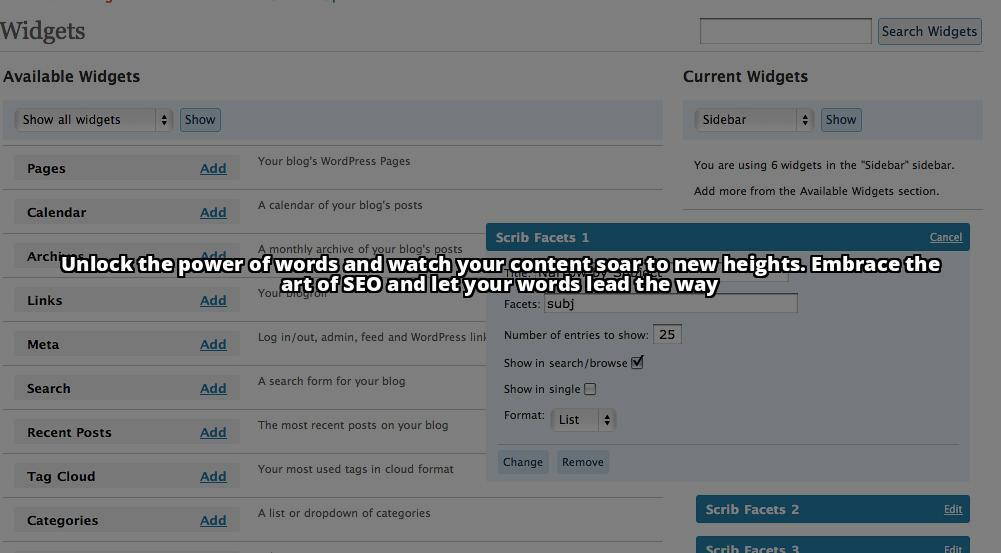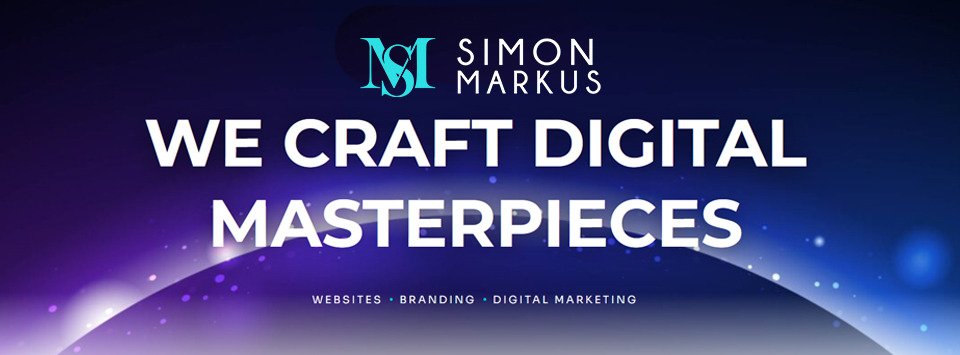What you will learn from this article:
- The importance of SEO in digital marketing strategies and how it contributes to content writing.
- How to perform keyword research for content writing, including the process, tools, and techniques.
- On-page SEO techniques for content optimization, such as optimizing title tags, meta descriptions, and incorporating keywords naturally within the content.
In today’s digital landscape, where online visibility plays a crucial role in the success of businesses, Search Engine Optimization (SEO) has become a fundamental aspect of digital marketing strategies. As entrepreneurs and small to medium business owners, it is essential to understand the importance of SEO for content writing and how it contributes to improving search engine rankings and increasing conversion rates.

Understanding the Basics of SEO
Before delving into the specifics of SEO for content writing, let’s first define what SEO is and why it is significant. SEO refers to the practice of optimizing a website’s content and structure to rank higher in search engine results pages (SERPs). When implemented effectively, SEO drives organic traffic to your website, increases visibility, and enhances your online presence.
When it comes to content writing, SEO plays a crucial role in making your content discoverable by search engines and users alike. By incorporating SEO techniques into your content, you can ensure that your website ranks higher in relevant searches, attracting more organic traffic and potential customers.

Performing Keyword Research for Content Writing
Keyword research forms the foundation of SEO for content writing. It involves identifying and analyzing the keywords and phrases that users are searching for in search engines. By understanding the search intent behind these keywords, you can create content that aligns with what users are looking for.
To conduct effective keyword research, you can utilize various tools and techniques. Tools like Google Keyword Planner, SEMrush, and Moz Keyword Explorer can provide valuable insights into search volume, competition, and related keywords. By using these tools, you can identify relevant keywords that have high search volume and low competition, giving you a better chance to rank higher in search results.
When selecting keywords for your content, it’s essential to consider the search intent behind them. Are users looking for information, products, or services? By understanding the intent, you can tailor your content to provide valuable solutions and meet the needs of your target audience.

On-Page SEO Techniques for Content Optimization
Once you have identified the relevant keywords for your content, it’s time to optimize your on-page elements to maximize your chances of ranking higher in search results. Here are some key on-page SEO techniques for content optimization:
Optimizing title tags, meta descriptions, and headings
Title tags and meta descriptions are crucial elements that appear in search engine results and influence click-through rates. It’s important to include your target keyword within the title tag and craft a compelling meta description that entices users to click on your link.
Headings, such as h1, h2, h3, etc., help structure your content and provide a hierarchy for search engines. Include your target keywords in your headings to signal to search engines the relevance of your content.
URL structure optimization for better search visibility
Optimizing your URL structure is another important aspect of on-page SEO. Ensure that your URLs are concise, descriptive, and contain relevant keywords. A well-structured URL can improve your website’s visibility in search results and make it more user-friendly.
Incorporating keywords naturally within the content
While it’s important to include your target keywords within your content, it’s equally important to do so naturally. Avoid keyword stuffing, as it can negatively impact the readability and user experience of your content. Instead, focus on creating valuable and informative content that naturally incorporates relevant keywords.
Importance of proper keyword density and placement
Keyword density refers to the percentage of times a keyword appears in your content compared to the total word count. While there is no strict rule for keyword density, it’s generally recommended to maintain a natural and balanced keyword distribution throughout your content. Placing keywords strategically in the introduction, headings, and body of your content can help search engines understand the relevance of your content.
Creating High-Quality and Engaging Content
While SEO is crucial for improving search engine rankings, it’s equally important to create high-quality and engaging content that resonates with your audience. Valuable content not only attracts more organic traffic but also encourages users to stay on your website, explore other pages, and eventually convert into customers.
To create well-researched and comprehensive content, it’s important to understand the pain points and challenges your target audience faces. Conducting thorough research and providing unique insights can position you as an industry expert and build trust with your audience.
Aligning your content with SEO best practices involves incorporating your target keywords naturally, structuring your content with headings and subheadings, and providing relevant and up-to-date information. By doing so, you can create content that not only ranks well in search results but also delivers value to your readers.
Optimizing Content Length and Readability
Content length and readability are two crucial factors that impact both SEO and user experience. Let’s explore how you can optimize these aspects:
Impact of content length on SEO and user experience
The length of your content can influence your search engine rankings. While there is no specific word count that guarantees higher rankings, it’s generally recommended to create content that is comprehensive and covers the topic in-depth. Longer content tends to perform better in search results, as it provides more opportunities to incorporate relevant keywords and provide valuable insights.
Additionally, longer content tends to attract more backlinks and social shares, further enhancing its SEO value. However, it’s important to maintain quality and not sacrifice readability for the sake of length.
Guidelines for optimizing article length for search engines
When optimizing your article length, aim for a word count that allows you to provide valuable information without overwhelming your readers. Depending on the topic and competition, this can range from 1,500 to 2,500 words or more. However, always prioritize quality over quantity.
Breaking your content into well-structured sections with headings and subheadings can improve readability and make it easier for users to navigate through your content. This also helps search engines understand the structure and relevance of your content.
Importance of readability and structuring content with headings and subheadings
Readability is a critical factor in engaging your audience and keeping them on your website. Use simple and concise language, avoid jargon, and break your content into smaller paragraphs to improve readability.
Structuring your content with headings and subheadings not only enhances readability but also helps search engines understand the context and relevance of your content. Utilize various heading levels, such as h2, h3, h4, etc., to create a hierarchical structure that guides readers through your content.
Addressing user expectations for comprehensive content
When users search for information, they expect comprehensive and detailed content that answers their questions. By providing in-depth information and addressing various aspects of the topic, you can meet user expectations and establish your website as a valuable resource.
Internal and External Linking Strategies
Incorporating internal and external links into your content is an effective SEO strategy that enhances user experience and improves search engine rankings. Let’s explore how you can optimize your linking strategies:
Importance of incorporating internal and external links
Internal links are links that connect different pages within your website, while external links are links that point to other websites. Both types of links are important for SEO and user experience.
Internal links help users navigate through your website, discover related content, and establish a logical connection between different pages. They also help search engines understand the structure and hierarchy of your website.
External links, on the other hand, provide additional information and resources to your readers. By linking to authoritative sources, you can enhance the credibility of your content and provide a more comprehensive user experience.
Strategic placement of relevant links to authoritative sources
When incorporating external links, it’s important to choose authoritative sources that are relevant to your content. Linking to reputable websites not only adds value to your content but also signals to search engines that your content is trustworthy and reliable.
Strategically placing internal and external links within your content can help guide users to relevant information and improve their overall experience on your website.
Benefits of internal linking for user experience and SEO
Internal linking improves user experience by providing users with easy navigation and access to related content. By linking to relevant pages within your website, you can keep users engaged and encourage them to explore more of your content.
From an SEO perspective, internal linking helps search engines discover and index your content more efficiently. It distributes the link equity throughout your website, improving the visibility and ranking potential of individual pages.
Guidelines for optimizing anchor text and link relevancy
Anchor text refers to the clickable text that contains the link. When optimizing anchor text, it’s important to use descriptive and relevant keywords that provide context about the destination page. Avoid using generic terms like “click here” or “read more,” as they don’t provide any information to search engines or users.
Ensure that the destination page is relevant to the anchor text and provides valuable information related to the linking keyword. This improves the relevancy of the link and enhances the user experience.

Optimizing Images and Multimedia for SEO
Images and multimedia elements play a crucial role in enhancing user engagement and improving the overall user experience on your website. Here’s how you can optimize them for SEO:
Importance of optimizing images and multimedia elements
Optimizing images and multimedia elements is essential for improving page load speed, enhancing user experience, and boosting SEO. Large-sized images and videos can significantly slow down your website, leading to higher bounce rates and lower search engine rankings.
Tips for optimizing alt tags, file names, and captions
When adding images to your content, it’s important to optimize their alt tags, file names, and captions. Alt tags are HTML attributes that provide alternative text for users who cannot view the image. Include relevant keywords in your alt tags to provide context to search engines and improve accessibility for visually impaired users.
File names should also be descriptive and contain relevant keywords. Avoid generic file names like “img12345.jpg” and instead use descriptive names that accurately represent the image.
Captions can provide additional context and information about the image. Use captions strategically to engage users and provide valuable insights related to the image.
Compressing images to improve page load speed
Compressing images is essential for optimizing page load speed. Large-sized images can significantly impact your website’s performance, leading to slower load times and a poor user experience. Use image compression tools to reduce the file size of your images without compromising on quality.
Incorporating multimedia elements effectively for user engagement
In addition to images, incorporating multimedia elements like videos, infographics, and interactive content can significantly enhance user engagement. Visual and interactive content tends to attract more attention and encourages users to spend more time on your website.
When adding multimedia elements, ensure that they are relevant to your content and provide value to your audience. Optimize the file sizes and formats to maintain optimal page load speed and user experience.
Case Study: How SEO Optimized Content Helped Boost Organic Traffic
I recently had the opportunity to work with a client who was struggling to increase their organic traffic and improve their search engine rankings. They had an informative website with well-written content, but it wasn’t getting the visibility it deserved.
After analyzing their website and conducting keyword research, we identified several areas for improvement. We optimized their title tags, meta descriptions, and headings to include relevant keywords and attract more clicks from search engine results pages. Additionally, we made sure to incorporate keywords naturally within the content to improve its relevance and visibility to search engines.
To further enhance their content, we recommended creating high-quality and engaging articles that provided value to their target audience. We advised them to conduct thorough research and produce comprehensive content that addressed their users’ needs and pain points. By aligning their content with SEO best practices, they were able to attract more organic traffic and increase user engagement.
Another important aspect we focused on was optimizing the length and readability of their articles. We advised them on the optimal article length for search engines and provided guidelines for structuring their content with headings and subheadings. By addressing user expectations for comprehensive content and making it easier to read and navigate, their articles became more user-friendly and search engine-friendly.
Through strategic internal and external linking, we also helped improve their website’s authority and credibility. We advised them to incorporate relevant links to authoritative sources within their content and optimize the anchor text for better search engine visibility. This not only improved the user experience but also boosted their website’s SEO performance.
By implementing these SEO techniques and regularly updating and refreshing their content, our client saw a significant improvement in their organic traffic. Their website started ranking higher in search engine results pages, leading to increased visibility and more organic visitors. They were thrilled with the results and the positive impact it had on their business.
This case study demonstrates the power of SEO-optimized content in boosting organic traffic and improving search engine rankings. By implementing the strategies discussed in this article, you too can experience the benefits of effective SEO for content writing.

Mobile-Friendly Design and User Experience
With the increasing use of mobile devices, having a mobile-friendly website is no longer an option but a necessity. Here’s why mobile-friendly design is crucial for SEO and user experience:
Significance of mobile-friendly design for SEO and user experience
Mobile-friendly design plays a crucial role in improving search engine rankings and providing a seamless user experience across devices. Search engines prioritize mobile-friendly websites in their mobile search results, as they want to deliver the best user experience to their mobile users.
From a user experience perspective, a mobile-friendly website ensures that your content is accessible, readable, and easy to navigate on smaller screens. It reduces the need for zooming and scrolling, enhancing the overall user experience.
Importance of responsive design and fast loading times
Responsive design is a popular approach to mobile-friendly web design. It involves creating a website that automatically adjusts its layout and content based on the user’s device, whether it’s a desktop, tablet, or smartphone. Responsive design ensures that your content is optimized for different screen sizes, providing a consistent and user-friendly experience.
Fast loading times are essential for both SEO and user experience. Mobile users expect quick access to information, and slow-loading websites can lead to higher bounce rates and lower search engine rankings. Optimize your website’s loading speed by minimizing HTTP requests, optimizing images, and leveraging caching techniques.
Easy navigation and seamless user experience across devices
Easy navigation is a key aspect of mobile-friendly design. Ensure that your website’s menu and navigation elements are easily accessible and user-friendly on mobile devices. Consider using a hamburger menu or other mobile-specific navigation patterns to provide a seamless browsing experience.
Providing a seamless user experience across devices involves more than just responsive design. Test your website on various devices and screen sizes to ensure that all functionalities work correctly and the content is displayed properly.
Impact of user experience on search engine rankings
User experience is a critical factor in search engine rankings. Search engines aim to deliver the best results to their users, and websites that provide a positive user experience are more likely to rank higher in search results.
Factors like low bounce rates, longer time spent on site, and high click-through rates all signal to search engines that your website is valuable and relevant to users. By prioritizing user experience, you can improve your search engine rankings and attract more organic traffic.
Regularly Updating and Refreshing Content for SEO
In the fast-paced digital world, it’s essential to regularly update and refresh your content to maintain relevance and improve search engine rankings. Here’s why it’s important:
Importance of updating and refreshing content for SEO
Search engines favor fresh and up-to-date content. By regularly updating your content, you can signal to search engines that your website is active and relevant. This can lead to higher rankings, increased organic traffic, and improved user engagement.
Additionally, updating your content allows you to incorporate new information, trends, and insights that may have emerged since the original publication. This keeps your content valuable and ensures that it provides the most accurate and relevant information to your audience.
By implementing effective SEO strategies for content writing, you can optimize your website’s visibility, increase organic traffic, and improve user engagement. Remember to focus on creating high-quality and valuable content that resonates with your audience, and regularly update your content to keep it fresh and relevant. With a well-executed SEO strategy, you can achieve long-term success in the digital marketing landscape.
Questions and Answers
Who can benefit from SEO for content writing?
Any digital marketer or business looking to improve online visibility.
What is SEO for content writing?
It’s the practice of optimizing website content to rank higher on search engines.
How does SEO improve content writing?
By using relevant keywords, optimizing meta tags, and improving readability.
Who needs to implement SEO for content writing?
Anyone who wants to attract organic traffic and increase website visibility.
What is the objection to implementing SEO for content writing?
It may seem time-consuming, but the long-term benefits outweigh the effort.
How can I get started with SEO for content writing?
Research keywords, optimize meta tags, and create high-quality, engaging content.
William, a seasoned digital marketer with over 10 years of experience, is the expert behind this comprehensive guide to SEO for content writing in the field of digital marketing. With a strong background in search engine optimization, William has successfully helped numerous businesses achieve higher search rankings and increase their organic traffic.
Having worked with both small startups and large corporations, William understands the importance of creating content that not only appeals to readers but also satisfies search engine algorithms. Their expertise lies in optimizing content through keyword research, on-page SEO techniques, and proper keyword placement to ensure maximum visibility in search engine results.
In addition to their expertise in content optimization, William is well-versed in creating high-quality and engaging content that not only captivates readers but also aligns with the best SEO practices. They understand the significance of content length, readability, and structuring with headings and subheadings to meet user expectations and improve search rankings.
With a results-driven approach, William also emphasizes the importance of internal and external linking strategies, optimizing images and multimedia elements, as well as maintaining a mobile-friendly design and seamless user experience.
Through their extensive knowledge and practical experience, William aims to provide readers with valuable insights and actionable tips to enhance their content writing skills and drive organic traffic through effective SEO techniques.



